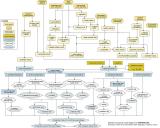Temperature
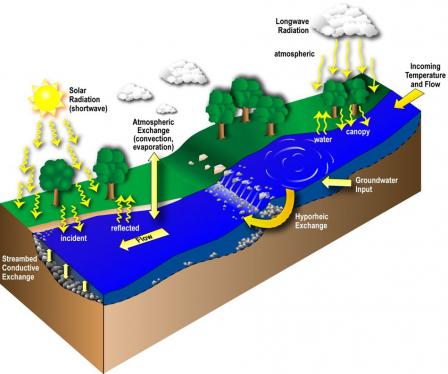 Figure 1. Major heat flux processes in streams. Click diagram to view a larger version.
Figure 1. Major heat flux processes in streams. Click diagram to view a larger version.
Adapted from Moore et al. (2005) and Johnson and Jones (2000)
On this Page
Temperature is the concentration of thermal energy in a substance such as water. The phrase "thermal regime" is used when emphasizing the temporal and spatial distribution of temperature.
Temperatures in streams and rivers are influenced by many atmospheric and hydrologic processes affecting the movement of heat (see Figure 1). In turn, temperature plays a fundamental role in shaping the structure and function of aquatic systems (see Table 1). It is frequently used as a basis for classifying streams (e.g., coldwater, warmwater).
This module provides advice for deciding whether to include temperature in your list of candidate causes. You may go directly to a specific section of interest by clicking on the tabs above.
| Category | Example Attributes |
|---|---|
| Physical | Water density, thermal stratification, solubility of oxygen and other chemicals |
| Chemical | Rates of nutrient cycling, contaminant transformation rates |
| Biological | Organism survival, growth, reproduction, development, behavior, habitat preference, competition |
Checklist of Sources, Site Evidence and Biological Effects
Temperature should be listed as a candidate cause when potential or observed human source and activities, site observations or observed effects support portions of the source-to-impairment pathways (see Figure 2). The more the thermal regime departs from the natural regime, the more likely it is to cause undesirable biological effects. Although increased temperature is more often a stressor of concern, impairment also can result from decreased temperatures, increased temperature ranges, and increased rates of temperature change.
The checklist below will help you identify whether to include temperature among your candidate causes. The list is intended to guide you in collecting evidence to support, weaken or eliminate temperature alteration as a candidate cause. For more information on specific entries, go to the When to List tab.
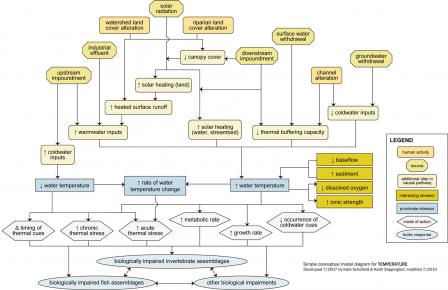 Figure 2. A simple conceptual diagram illustrating causal pathways, from sources to impairments, related to temperature. Click on the diagram to view a larger version.Consider listing temperature as a candidate cause when the following sources and activities, site evidence and biological effects are present:
Figure 2. A simple conceptual diagram illustrating causal pathways, from sources to impairments, related to temperature. Click on the diagram to view a larger version.Consider listing temperature as a candidate cause when the following sources and activities, site evidence and biological effects are present:
Sources and Activities
- Discharge of heated effluents
- Removal of riparian vegetation
- Removal of upland vegetation
- Impervious surfaces
- Channel alteration
- Impoundments or dams
- Removal of water from surface or groundwater
Site Evidence
- Reduced riparian cover
- Temperature measurements
Biological Effects
- Absence of coldwater taxa where they are expected
- Absence of warmwater taxa where they are expected
- Congregation of fish near heated discharges
- Congregation of coldwater fish near ground inputs
- Dissolved oxygen
- Ionic strength
- Flow alteration
- Sediments
- Ammonia
On this Page
- Sources and Activities that Suggest Listing Temperature as a Candidate Cause
- Site Evidence that Suggests Listing Temperature as a Candidate Cause
- Biological Effects that Suggest Listing Temperature as a Candidate Cause
- Site Evidence that Supports Excluding Temperature as a Candidate Cause
Sources and Activities that Suggest Listing Temperature as a Candidate Cause
Many human activities can change the temperature or modify the thermal regime of waterbodies and thus aquatic ecosystem structure and function (Poole and Berman 2001, Galli and Dubose 1990). Mechanisms underlying thermal modifications range from simple, direct relationships (e.g., discharge of heated cooling water) to complex, indirect relationships (e.g., bank erosion leading to increased channel width, increased solar radiation, reduced stream flow, and greater conductive heating). Climate change may also affect water temperature via several interrelated causal steps (e.g., changes in air temperature, humidity, cloud cover, precipitation quantity and intensity, vegetative composition and cover). However, a discussion of climate change impacts on aquatic ecosystems is beyond the scope of this module, because of its complexity and broad spatial and temporal scale.
Sources of altered thermal regimes are best evaluated by considering them in context of the atmospheric and hydrologic processes that influence temperature in streams and rivers (Figure 1, on Introduction tab). Dominant sources of heat flux into and out of streams include solar radiation, groundwater input, upstream temperature and flow, atmospheric exchange (via convection and evaporation), streambed conduction and longwave radiation. Additional heat exchange processes not depicted in Figure 1 may be important in specific streams or situations (e.g., friction generated by rapidly moving water in steep-sloped streams).
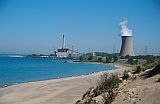 Figure 3. A cooling tower lowers the temperature of power plant cooling water to avoid a heated discharge.
Figure 3. A cooling tower lowers the temperature of power plant cooling water to avoid a heated discharge.
Courtesy of National Biological Information InfrastructureMany naturally occurring environmental conditions can substantially modify the impact of these heat flux processes on stream temperature. For example, riparian cover can greatly reduce the amount of solar radiation that reaches the stream surface, particularly in small streams. Modifying factors associated with the underlying geology include stream flow, hyporheic exchange, channel morphology and complexity and upland vegetation. Other modifying factors include relative humidity and wind speed.
Some common anthropogenic sources and activities that modify temperature are described below:
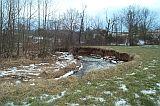 Figure 4. Riparian devegetation may change water temperature.
Figure 4. Riparian devegetation may change water temperature.
Photo courtesy of A. Sappington, Thomas Jefferson Soil and Water Conservation DistrictDischarge of heated water can directly modify downstream temperatures, as well as indirectly affect temperature by altering water volume and velocity (see Figure 3).
Removal of riparian vegetation allows increased solar radiation to reach the stream surface, directly increasing water temperature (see Figure 4). Removal of trees also decreases evapotranspiration, which reduces evaporative cooling. Vegetation removal also may reduce the insulating capacity of these buffers, due to increased longwave radiation from surface water to atmosphere, decreased longwave radiation from canopy to surface water, or increased wind speed. Each of these factors may contribute to lower minimum temperatures. In addition, destabilization of stream banks can lead to increased channel widths, decreased depths and associated temperature changes (Moore et al. 2005).
 Figure 5. Upland devegetation indirectly increases water temperatures.
Figure 5. Upland devegetation indirectly increases water temperatures.
Photo courtesy of U.S. Fish & Wildlife ServiceRemoval of upland vegetation can result in increased surface runoff with elevated temperatures due to increased heat absorption across the landscape (see Figure 5). Higher surface soil temperatures, increased sedimentation and channel alteration, and increased or decreased groundwater inputs also may affect stream temperatures (Moore and Wondzell 2005, Johnson and Jones 2000).
Impervious surfaces can rapidly deliver large volumes of warm or cold stormwater runoff (see Figure 6), which can increase water temperatures in the summer and decrease them in the winter (Galli and Dubose 1990). Figure 6. Impervious surfaces can heat or cool stormwater runoff.
Figure 6. Impervious surfaces can heat or cool stormwater runoff.
Channel alteration can change flow regimes, reduce stream-floodplain connectivity and reduce groundwater discharge (see Figure 7). Changes in groundwater discharge affect stream temperature by reducing the capacity of streams to buffer changes in heat loads from other sources (Paul and Meyer 2001, Poole and Berman 2001, LeBlanc et al. 1997, Klein 1979).
Impoundments or dams can directly increase or decrease downstream temperatures, depending on the type (i.e., surface or bottom) and timing of water releases (see Figure 8). 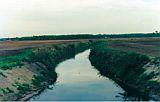 Figure 7. Channel alterations may include straightening and widening the channel.Upstream of impoundments, associated hydrologic changes may alter temperatures due to greater stream widths and retention times. In general, discharges from shallow impoundments that do not stratify will increase maximum summer water temperatures. Alteration of upstream and downstream sediment loads also may lead to channel alteration and subsequent temperature changes (Webb and Walling 1993, 1996).
Figure 7. Channel alterations may include straightening and widening the channel.Upstream of impoundments, associated hydrologic changes may alter temperatures due to greater stream widths and retention times. In general, discharges from shallow impoundments that do not stratify will increase maximum summer water temperatures. Alteration of upstream and downstream sediment loads also may lead to channel alteration and subsequent temperature changes (Webb and Walling 1993, 1996).
Removal of water from surface or groundwaters for agricultural (see Figure 9), industrial or municipal uses can affect stream thermal regimes. For example, surface water withdrawals can reduce stream flow, leading to accelerated heating and higher temperatures. Reduced baseflow due to groundwater withdrawals may lead to greater diurnal variation in stream temperatures (Poole and Berman 2001, LeBlanc et al. 1997).
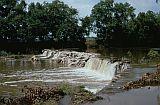 Figure 8. Temperature changes caused by impoundments vary based on design.
Figure 8. Temperature changes caused by impoundments vary based on design.
Photo courtesy of U.S. Fish & Wildlife ServiceSources and activities that influence temperature can also increase other stressors. For example, removal of riparian vegetation and increased impervious surfaces can result in increased sediments and flow alterations. Increased water temperature reduces the amount of oxygen that water can hold and increases the solubility of many ions. For these reasons, consider including reduced dissolved oxygen and increased ionic strength on your list of candidate causes whenever you include increased temperature.
Site Evidence that Suggests Listing Temperature as a Candidate Cause
Except for phase changes (freezing or vaporization), water temperature changes are not directly observable under typical field settings. Observers usually must measure water temperature to detect a change. 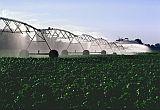 Figure 9. Water withdrawal for irrigation.
Figure 9. Water withdrawal for irrigation.
Photo courtesy of U.S. Department of AgricultureSite observations indicative of temperature change are therefore indirect and largely restricted to observing the presence of one or more sources of thermal modification. For example, because incident solar radiation often has a strong effect on stream temperature, observations of reduced riparian cover over a stream relative to reference conditions may suggest temperature changes. Congregation of coldwater fish near groundwater inputs to streams during summer may indicate suboptimal temperatures outside these zones. Congregation of fish near industrial discharges during winter may indicate the presence of heated discharges.
Biological Effects that Suggest Listing Temperature as a Candidate Cause
The effects of modified thermal regimes can occur at various levels of biological organization and involve numerous endpoints. For example, biochemical changes related to temperature include the rates of enzymatic reactions, metabolic processes, and protein synthesis (e.g., heat shock proteins). At the organism level, modified thermal regimes can affect survival, growth rate, gamete production, swimming speed, disease susceptibility, migratory behavior, timing of metamorphosis and other traits.
At the population, community and ecosystem levels, modified thermal regimes can alter attributes such as population density, age- or size-class structure, predator/prey dynamics, temporal dynamics of populations and communities, species richness, rates of microbial decomposition and ecosystem productivity. For reviews of the thermal effects literature, see U.S. EPA (2003), U.S. EPA (2001), Beitinger et al. (2000), Galli and Dubose (1990), Cravens and Harrelson (1987), Ward and Stanford (1982), and Vannote and Sweeney (1980).
Biotic responses to altered stream temperatures are often linked to different spatial or temporal attributes of a stream's thermal regime. For example, timing of fish migration and spawning or emergence of benthic insects may be initiated by gradual stream warming in spring or cooling in autumn. However, increases in maximum temperatures during summer or decreases in minimum temperatures during winter may be stressful enough to cause acute lethality.
The availability of thermal refugia, or small stream areas with thermally preferred habitat, may ameliorate otherwise lethal thermal conditions, at least over short time periods. Longer-term increases in stream temperatures may make organisms more susceptible to disease.
Aquatic organisms are believed to be adapted to specific thermal regimes or "thermal niches" to maximize their competitive advantage (Johnson and Kelsch 1998 Beitinger and Fitzpatrick 1979, Magnuson et al. 1979, Hokanson 1977). These thermal niches are reflected when scientists classify organisms in terms of thermal preference (e.g., coldwater or warmwater).
However, water temperatures often fluctuate extensively over different temporal and spatial scales (e.g., diurnally, seasonally, laterally, vertically and longitudinally). Thus, organisms in aquatic ecosystems have developed behavioral and physiological mechanisms to acclimate to or avoid suboptimal temperatures. This can make it difficult to interpret observations of species presence and absence.
In addition, prior exposure to fluctuating temperatures [i.e., an organism's "thermal history" (Beitinger et al. 2000)] influences an organism's ability to tolerate suboptimal temperatures. This suggests that an organism's thermal history may influence its response to temperature and makes it to difficult to generalize.
The biological effects of modified thermal regimes generally are not sufficiently specific to diagnose thermal modification as the primary causative agent, or to rule out other candidate causes. There are, however, a number of readily observed biological effects that may suggest modified thermal regimes, including:
- Absence of coldwater taxa (e.g., salmonids, stoneflies) in streams where these taxa are known or expected to occur naturally
- Presence of warmwater taxa in streams where coldwater taxa are known or expected to occur naturally
- Changes in the onset of certain reproductive or developmental events cued to temperature (e.g., earlier insect emergence or fish migration in warmer waters
- Behavioral changes, such as congregation of fish near cold- or warmwater inputs
Consider including temperature as a candidate cause when you see changes in aquatic community structure or acute biotic effects as described above. Please note, however, that observations of these effects do not confirm a causal relationship, because they may also be caused by other stressors or a combination of factors.
Site Evidence that Supports Excluding Temperature as a Candidate Cause
There are no site observations that specifically provide evidence of the absence of thermal regime changes. General reasons for excluding a candidate from the list are described in Step 2 of the Step-by-Step Guide and in Tips for Listing Candidate Causes.
We strongly caution against using benchmarks of effects (e.g., water quality criteria) as evidence for excluding temperature from your initial list of candidate causes. Different species have different temperature requirements and different sites have different naturally occurring temperatures.
When considering temperature as a candidate cause of impairment, stream temperature measurements should incorporate spatial and temporal variability to the extent feasible. These considerations are particularly important in terms of seasonal and inter-annual stream temperature variation. Various automated temperature monitoring devices can be used to incorporate temporal variability in water temperature measurements (e.g., min/max thermometers and automated temperature loggers). One can measure spatial differences in temperature over an water surface area using airborne and satellite remote sensing techniques (Torgersen et al. 2001).
One-time measurements of stream temperature (called spot or point measurements) can be unreliable indicators of thermal modification. They are best reserved for situations in which the source is highly localized (e.g., point source discharges of heated cooling water). If spot measurements are the only available technique for measuring stream temperatures, care should be taken to control for diurnal variation. For example, measurements should be taken at the same time of day at reference and impaired sites. Measurements also should be made in a variety of habitats within the stream to capture within-channel spatial variability. Table 2 provides some common metrics for stream thermal regimes and their relationship to biological effects.
| Temperature Metric | Relationship to Biological Effects |
|---|---|
| Daily maximum, minimum and average | Often used for evaluating acutely lethal conditions via comparison with laboratory toxicity data |
| Daily range | Increases may indicate changes associated with reduced riparian cover or baseflow, may increase physiological stress |
| 7-day average of daily maximum | Used by U.S. EPA Region 10 for setting protective thermal criteria for salmonids during summer (U.S. EPA 2001) |
| Maximum weekly average | Traditionally used by U.S. EPA to evaluate chronic effects of temperature on organism growth (U.S. EPA 1985c) |
| Weekly average, monthly average | Can be used to characterize and evaluate seasonal changes in temperature regime, and related cues to reproduction and development |
| Cumulative degree days | Summation of average daily temperatures that represents an integrative measure of thermal exposure history; may be linked to onset of developmental or reproductive events |
On this Page
About Conceptual Diagrams
Conceptual diagrams are used to describe hypothesized relationships among sources, stressors and biotic responses within aquatic systems.
Simple Conceptual Model Diagram
Water temperature is a key environmental variable for many aquatic biota, and many human-based activities can alter the temperature regimes of flowing waters. Most human activities alter stream temperature regimes through land cover alteration and subsequent changes in the delivery and distribution of heat from the ultimate source – solar radiation. Figure 2. A simple conceptual diagram illustrating causal pathways, from sources to impairments, related to temperature. Click on the diagram to view a larger version.
Figure 2. A simple conceptual diagram illustrating causal pathways, from sources to impairments, related to temperature. Click on the diagram to view a larger version.
These activities may influence water temperatures via five dominant pathways (see Figure 10): (1) by increasing coldwater inputs; (2) by increasing warmwater inputs; (3) by increasing solar radiative heating (of the water and the streambed); (4) by decreasing the thermal buffering capacity of the system; and (5) by decreasing coldwater inputs.
For example, impoundments may change the temperature of water released downstream, increasing warmwater inputs if releases are from warmer surface layers or increasing coldwater inputs if releases are from cooler deep-water layers. Some industrial activities generate thermal effluents, which also can increase warmwater inputs and significantly raise downstream temperatures.
For example, groundwater inputs can help mediate temperature increases, as groundwater often is cooler than surface waters, especially in summer. If groundwater inputs are reduced (e.g., due to decreased groundwater recharge), coldwater inputs may decrease and this temperature-buffering capacity may be lost.
Changes in water temperature can be closely related to several other stressors. For example, DO saturation concentration decreases and dissolution of ionic compounds increases at warmer temperatures, so temperature increases can contribute to problems with these stressors. Increases in suspended sediments can increase temperature by increasing heat absorption, and reductions in baseflow (i.e., groundwater discharge) also can lead to water temperature increases.
Alteration of water temperatures can affect aquatic organisms in several ways. Perhaps most obvious, water temperatures may exceed the upper and lower tolerance limits for specific taxa or life stages: decreases in minimum temperatures or increases in maximum temperatures may result in acute or chronic stress in organisms intolerant of these modified temperature conditions. Relatively rapid changes in temperature (e.g., increases in diurnal temperature range) also may be stressful for organisms that are not adapted to fluctuating conditions.
In addition to acute and chronic stress effects, changes in extreme temperature values may contribute to increases or decreases in average temperatures, and subsequent changes in the rate of total heat accumulation, a key developmental cue for many aquatic organisms. Water temperature can significantly affect a suite of physiological processes and behavioral characteristics in aquatic invertebrates and fishes, from metabolic rates to activity levels, each of which may contribute to temperature-based biological impairment.
Detailed Conceptual Model Diagram
Temperature directly influences the physical, chemical, and biological processes and attributes of aquatic ecosystems. As a result, changes in water temperature and thermal regime can significantly impact the structure and function of aquatic communities.
The temperature conceptual model diagram (see Figure 11) depicts sources and land use and channel alterations that alter the delivery of heat to streams near the top of the figure, leading down the diagram to steps in the causal pathway, proximate stressors, modes of action and eventually biological responses at the bottom. This narrative generally follows the diagram from top to bottom, left to right.
This temperature diagram is most applicable to wadeable streams. Temperature dynamics in larger streams may be driven by different factors; for example, some human activities included here (e.g., removal of riparian vegetation) will have less impact on larger streams that rely less on riparian trees for shading.
Linking Sources to Proximate Stressors
There are a few direct anthropogenic inputs that affect water temperature. For example, upstream impoundments may increase or decrease stream temperatures depending on the type of release (i.e., hypolimnetic vs. epilimnetic), and discharge of heated industrial effluents can increase stream temperatures and affect the rate of temperature change (e.g., causing a rapid drop in stream temperatures during periods of discharge cessation). However, most human activities alter stream thermal regimes through land cover alteration and subsequent changes in the delivery and distribution of heat from the ultimate source – solar radiation.
Watershed land cover alteration (e.g., vegetation removal) can increase warmwater inputs by increasing solar heating of the land and heated surface runoff from impervious surfaces. Riparian land cover alteration and devegetation increases stream temperatures by increasing solar radiative heating, either by directly decreasing canopy cover and shading or by increasing stream bank erosion and stream channel width (i.e., leading to slower, shallower water and decreased importance of canopy cover).
These land cover changes also may affect thermal buffering capacity. For example, groundwater inputs can help mediate temperature increases, as groundwater often is cooler than surface waters, especially in summer. If groundwater inputs are reduced (e.g., due to decreased infiltration and groundwater recharge), coldwater inputs may decrease and this temperature-buffering capacity may be lost.
Downstream impoundments increase water retention time and surface area, increasing the temperature of impounded water. Surface water withdrawals decrease the volume of water, decreasing buffering capacity. Channel alteration, including tiling, also can affect the ability of a stream to “buffer” various heating processes by reducing hyporheic exchange and groundwater recharge. Groundwater withdrawals not only decrease the volume of water, but also coldwater inputs [for a more detailed examination of stream temperature processes, see Poole and Berman (2001)].
Changes in water temperature can be closely related to several other stressors. For example, DO saturation concentration decreases and dissolution of ionic compounds increases at warmer temperatures, so temperature increases can contribute to problems with these stressors. Increases in suspended sediments can increase temperature by increasing heat absorption, and reductions in baseflow (i.e., groundwater discharge) also can lead to water temperature increases.
Linking Proximate Stressors to Biological Impairment
Altered stream temperature regimes can cause biological impairment through a variety of direct and indirect mechanisms. Acute lethality to organisms occurs when maximum stream temperatures exceed thermal tolerances for a sufficient period of time, or when the rate of water temperature change is so fast that organisms are unable to acclimate.
Consequently, shifts in community structure, from coldwater to warmwater taxa, may be observed. In fact, many coldwater species are limited in their distribution by maximum stream temperatures during summer; conversely, the distribution of warmwater species may be limited by minimum winter temperatures, and thus, reductions in minimum stream temperatures may be particularly relevant for these taxa (Scheller et al. 1999).
Chronic thermal stress can manifest in aquatic organisms through a variety of mechanisms, including increased parasitism and disease and changes in behavior or condition. Increased temperatures also lead to higher metabolic rates, and associated increases in energy requirements; if increased energy requirements are not accompanied by increased food intake, then organism health and fitness can be impaired.
The timing of temperature changes also is of critical importance to the ecological health of aquatic ecosystems. For example, developmental and reproductive cycles of many species are closely tied to seasonal changes in stream temperatures and/or the rate of heat accumulation in the stream.
Changes in timing of such thermal cues, due to either increased or decreased temperatures, can alter the timing of insect emergence, fish migration, and other activities, disrupting natural life cycles and predator-prey relationships. Any of these direct or indirect temperature effects can contribute to biological impairment of aquatic communities.
You may need a PDF reader to view some of the files on this page. See EPA’s About PDF page to learn more.
- Beitinger TL, Bennett WA, McCauley RW (2000) Temperature tolerances of North American freshwater fishes exposed to dynamic changes in temperature. Environmental Biology of Fishes 58(3):237-275.
- Beitinger TL, Fitzpatrick LC (1979) Physiological and ecological correlates of preferred temperature in fish. American Zoologist 19:319-332.
- Cravens JB, Harrelson ME (1987) Thermal effects. Journal of the Water Pollution Control Federation 59:531-539.
- Galli J, Dubose R (1990) Thermal Impacts Associated with Urbanization and Stormwater Management Best Management Practices. Metropolitan Washington Council of Governments, Department of Environmental Programs, Washington DC.
- Hokanson KEF (1977) Temperature requirement of some percids and adaptations to the seasonal temperature cycle. Journal of the Fisheries Research Board of Canada 34:1524-1550.
- Johnson JA, Kelsch SW (1998) Effects of evolutionary thermal environment on temperature: preference relationships in fishes. Environmental Biology of Fishes 53:447-458.
- Johnson SL, Jones JA (2000) Stream temperature responses to forest harvest and debris flows in western Cascades, Oregon. Canadian Journal of Fisheries and Aquatic Sciences 57(Suppl. 2):30-39.
- Klein R (1979) Urbanization and stream quality impairment. Water Resources Bulletin 15:948-963.
- LeBlanc RT, Brown RD, Fitzgibbon JE (1997) Modeling the effects of land use change on the water temperature in unregulated urban streams. Journal of Environmental Management 49(4):445-469.
- Magnuson JJ, Crowder LB, Medvick PA (1979) Temperature as an ecological resource. American Zoologist 19:331-343.
- Moore RD, Spittlehouse DL, Story A (2005) Riparian microclimate and stream temperature response to forest harvesting: a review. Journal of the American Water Resources Association 41:813-834.
- Moore RD, Wondzell SM (2005) Physical hydrology and the effects of forest harvesting in the Pacific Northwest: a review. Journal of the American Water Resources Association 41:763-784.
- Paul MJ, Meyer JL (2001) Streams in the urban landscape. Annual Review of Ecology and Systematics 32:333-365.
- Poole GC, Berman CH (2001) An ecological perspective on in-stream temperature: natural heat dynamics and mechanisms of human-caused thermal degradation. Environmental Management 27(6):787-802.
- Scheller RM, Snarski VM, Eaton JG, Oehlert GW (1999) An analysis of the influence of annual thermal variables on the occurrence of fifteen warmwater fishes. Transactions of the American Fisheries Society 128:257-264.
- Torgersen CE, Faux RN, McIntosh BA, Poage NJ, Norton DJ (2001) Airborne thermal remote sensing for water temperature assessment in rivers and streams. Remote Sensing of Environment 76:386-398.
- U.S. EPA (1985) Quality Criteria for Water. U.S. Environmental Protection Agency, Office of Water, Washington DC. EPA/440/5-86-001.
- U.S. EPA (2001)
- Issue Paper 5: Summary of Technical Literature Examining the Physiological Effects of Temperature on Salmonids. U.S. Environmental Protection Agency, Region 10, Seattle WA. EPA-910-D-01-005.
- U.S. EPA (2003) EPA Region 10 Guidance for Pacific Northwest State and Tribal Temperature Water Quality Standards. U.S. Environmental Protection Agency, Region 10, Seattle WA. EPA-910-B-03-002.
- Vannote RL, Sweeney BW (1980) Geographic analysis of thermal equilibria: a conceptual model for evaluating the effect of natural and modified thermal regimes on aquatic insect communities. American Naturalist 115(5):667-695.
- Ward JV, Stanford JA (1982) Thermal responses in the evolutionary ecology of aquatic insects. Annual Review of Entomology 27:97-117.
- Webb BW, Walling DE (1993) Temporal variability in the impact of river regulation on thermal regime and some biological implications. Freshwater Biology 29(1):167-182.
- Webb BW, Walling DE (1996) Long-term variability in the thermal impact of river impoundment and regulation. Applied Geography 16(3):211-223.
Contacts: Authors & Contributors

